Información previa al proceso contractual
La presente página web www.lupaiberica.com es propiedad de LUPA IBERICA,S,A, con CIF A78305851 y dirección fiscal en AV PIRINEOS 7 EDIF B NAVE 12, 28703-SAN SEBASTIAN DE LOS REYES (MADRID).
Las condiciones Generales de Contratación regulan la relación de venta a distancia entre LUPA IBERICA SA y el usuario o cliente, de acuerdo con las estipulaciones legales, en especial, la Ley 7/1998, de 13 de abril, sobre Condiciones Generales de Contratación, la Ley 3/2014, de 27 de marzo por la que se modifica el texto refundido de la Ley General para la Defensa de los consumidores y Usuarios, la normativa vigente y aplicable en Protección de Datos de Carácter Personal, la Ley 7/1996, de 15 de enero de Ordenación del Comercio Minorista, y a la Ley 34/2002 de 11 de julio, de Servicios de la Sociedad de la Información y de Comercio Electrónico.
LUPA IBERICA SA se reserva el derecho a realizar las modificaciones que considere oportunas, sin aviso previo, en las Condiciones Generales. Dichas modificaciones podrán realizarse, a través de sus websites, por cualquier forma admisible en derecho y serán de obligado cumplimiento durante el tiempo en que se encuentren publicadas en la web y hasta que no sean modificadas válidamente por otras posteriores. No obstante, LUPA IBERICA SA se reserva el derecho de aplicar, en determinados casos, unas Condiciones Particulares de Contratación con preferencia a las presentes Condiciones Generales cuando lo considere oportuno, anunciándolas en tiempo y forma oportunos.
El objeto de la página web es de productos de servicios de ganadería y accesorios para cuadras.
La duración del contrato quedará vinculada a la entrega del producto sin perjuicio del derecho de desistimiento.
Como usuario o cliente declara expresamente conocer, entender y aceptar las condiciones de uso y estas condiciones generales de contratación. Del mismo modo, declara ser mayor de edad y tener la capacidad jurídica y de obrar necesarias para el acceso a los sitios web de LUPA IBERICA SA y la contratación por medio de los mismos.
Para adquirir nuestros productos, usted puede dirigirse al apartado correspondiente de nuestra tienda online.
Es requisito imprescindible que se registre como usuario de la web para realizar la compra online. Puede acceder al apartado correspondiente para el registro en la propia web. De conformidad con lo que establece la normativa vigente y aplicable en Protección de Datos de Carácter Personal, LUPA IBERICA SA informa a los usuarios que los datos personales recabados durante el proceso de registro y posterior compra, serán introducidos en un sistema de tratamiento bajo su responsabilidad, con la finalidad de tramitar dichas acciones por parte del usuario y gestionar actuaciones posteriores derivadas de las mismas. Asimismo, LUPA IBERICA SA informa de la posibilidad de ejercer los derechos de acceso, rectificación, limitación de tratamiento, supresión, portabilidad y oposición al tratamiento de sus datos de carácter personal mediante un escrito a la dirección AV. PIRINEOS 7 EDIF B NAVE 12 28703-SAN SEBASTIAN DE LOS REYES (MADRID) o a través del correo electrónico This email address is being protected from spambots. You need JavaScript enabled to view it. Le informamos que el tratamiento de sus datos está legitimado por su consentimiento y/o la relación contractual que mantenemos con usted. Durante el proceso de compra deberá identificarse con el nombre de usuario y la contraseña proporcionados. Estos datos no serán públicos. Usted se hace responsable de tratar confidencial y responsablemente la identidad y contraseña obtenidas en el registro como cliente, no pudiendo cederlas a otro. Puede modificar la información registrada en cualquier momento, en su área de cliente. En este mismo apartado usted tendrá acceso a un histórico de sus pedidos, esté sólo es un apartado de consulta pero se permite su gestión, pudiendo el usuario eliminar aquellos registros que considere no es necesario visualizar. Finalizado el proceso de compra el cliente recibirá una confirmación del mismo por correo electrónico. Es imprescindible que durante el proceso de compra el usuario indique un correo electrónico válido. Si en 24 horas desde la finalización del pedido no recibe la confirmación, póngase en contacto con LUPA IBERICA SA en el teléfono de atención al cliente 91-3599003 o mediante el correo electrónico This email address is being protected from spambots. You need JavaScript enabled to view it.
Todos los contenidos de la web están en español.
El cliente, al recibir el producto en la dirección de entrega facilitada, recibirá una factura o copia del pedido.
Oferta y vigencia
En caso de un producto en oferta, siempre se indicará junto a sus características esenciales, el precio de oferta y la validez de la misma.
En cumplimiento de la normativa vigente LUPA IBERICA SA ofrece información sobre todos los artículos en venta, sus características y precios. No obstante, LUPA IBERICA SA se reserva el derecho a retirar, reponer o cambiar los productos que se ofrecen a través de su página web, mediante el simple cambio en el contenido de la misma. De esta forma, los productos ofrecidos en cada momento por la web se regirán por las Condiciones Generales de Contratación vigentes en cada caso. Asimismo, la empresa tendrá la facultad de dejar de ofrecer, sin previo aviso y en cualquier momento, el acceso a los productos mencionados.
Características esenciales de los productos
Los productos ofertados en nuestra tienda online, incorporan una fotografía y las características esenciales del mismo, esta es la información obtenida del propio fabricante. El color del producto, observable en la fotografía no es vinculante. En las características se identifica el mismo.
Garantías
Todos los productos ofrecidos en la página web gozan de la garantía legal del proveedor del mismo. LUPA IBERICA SA dispone de un servicio de posventa, mientras esté vigente la garantía, el cliente podrá ejecutarla dirigiéndose al establecimiento de LUPA IBERICA SA, al servicio de posventa, por correo electrónico a This email address is being protected from spambots. You need JavaScript enabled to view it. o a los puntos establecidos por el propio proveedor. En caso de duda podrá dirigirse al teléfono de atención al cliente 91-3599003 o mediante el correo electrónico This email address is being protected from spambots. You need JavaScript enabled to view it.
Precios
Todos los productos indican el precio de venta en Euros y no incluyen el Impuesto sobre el Valor Añadido (IVA). Al formalizar la compra, el cliente debe darse de alta como usuario, en ese momento se comprobará si está sujeto al impuesto . Siendo así, el cliente recibirá una confirmación del pedido con el precio total a pagar, antes de proceder al pago.
Gastos de entrega y transporte
LUPA IBERICA SA realiza envíos en España Península, España Islas, Europa y resto del mundo. Los gastos de envió se aplicaran en función de la zona de envío, volumen y peso. Se especificarán antes de finalizar el pedido. LUPA IBERICA SA informa que el sistema calcula automáticamente los portes de paquetería a la península pero, si se trata de productos grandes, sin embalaje o, es fuera de la península, remitiremos un presupuesto que incluye portes y plazo de entrega, donde el cliente deberá de aceptarlo antes de realizar el pago.
Ejecución del pedido
LUPA IBERICA SA informa que, el tiempo de entrega estimado podrá ser consultado antes de realizar el pedido y en cualquier momento podrá ponerse en contacto con nuestro departamento de atención al cliente para conocer su estado.
Formas de pago
El cliente podrá abonar el importe de su pedido optando por cualquiera de las siguientes formas. Durante el proceso de compra deberá indicar su elección:
- Tarjeta de crédito VISA o MASTERCARD Todas las operaciones que implican la transmisión de datos personales o bancarios se realizan utilizando un entorno seguro, un servidor basado en la tecnología de seguridad estándar SSL (Secure Sockets Layer). Toda la información que nos transmita viaja cifrada a través de la red. Asimismo los datos sobre su tarjeta de crédito son introducidos directamente en la página del banco, en el TPV (Terminal Punto de venta del Banco) y no son introducidos ni registrados en ningún servidor de LUPA IBERICA SA.
Al pagar con tarjeta VISA o MASTERCARD se le solicitarán siempre los siguientes datos: el número de tarjeta, la fecha de caducidad, y un Código de Validación que coincide con las tres últimas cifras del número impreso en cursiva en el reverso de su tarjeta VISA o MASTERCARD, ofreciendo, de esta forma, más garantías acerca de la seguridad de la transacción. Esta forma de pago es válida únicamente en la web.
Cuando el importe de una compra hubiese sido cargado fraudulenta o indebidamente utilizando el número de una tarjeta de pago, su titular podrá exigir la inmediata anulación del cargo. En tal caso, las correspondientes anotaciones de adeudo y re-abono en las cuentas del proveedor y del titular se efectuarán a la mayor brevedad. Sin embargo, si la compra hubiese sido efectivamente realizada por el titular de la tarjeta y la exigencia de devolución no fuera consecuencia de haberse ejercido el derecho de desistimiento o de resolución y, por tanto, hubiese exigido indebidamente la anulación del correspondiente cargo, aquel quedará obligado frente a LUPA IBERICA SA al resarcimiento de los daños y perjuicios ocasionados como consecuencia de dicha anulación.
- Transferencia Bancaria
Al seleccionar la transferencia bancaria recibirá, junto con la confirmación de su pedido, un e-mail con los datos bancarios de LUPA IBERICA SA.
Es muy importante que al realizar la transferencia indique en el asunto el número de pedido, así como su nombre y apellidos, y realice la transferencia dentro de los 3 días posteriores a la fecha de confirmación del pedido para poder validarlo.
Si lo desea, puede enviarnos el justificante de la transferencia por e-mail This email address is being protected from spambots. You need JavaScript enabled to view it. pero en cualquier caso, no se considerará efectivo el pedido hasta que nuestro departamento de administración no tenga confirmación bancaria de la transferencia.
Recordarle que el pago se tiene que realizar en EUROS y que todas las eventuales comisiones de cambio y bancarias corren por su cuenta.
En el caso de transferencias bancarias realizadas desde fuera de España, es muy importante que al ordenar la transferencia comunique siempre a su banco hacerse cargo de las comisiones en origen, aquellas comisiones bancarias y gastos correspondientes a su entidad. De no ser así, LUPA IBERICA SA podría paralizar el envío de su pedido al no recibir la cantidad íntegra del mismo. Las posibles comisiones de cambio y bancarias corren a cargo del cliente.
La disponibilidad de los productos ofrecidos por LUPA IBERICA SA puede variar en función de la demanda de los clientes. Pese a que LUPA IBERICA SA actualiza el stock periódicamente, el producto solicitado por el cliente podría estar agotado en ese momento. En caso de no ejecución por indisponibilidad, LUPA IBERICA SA en el momento que tenga conocimiento de esta situación lo notificará al cliente, por medio de un correo electrónico. El periodo de esta comunicación no superará en ningún caso el plazo máximo de 30 días. LUPA IBERICA SA podrá dar la doble opción de: suministrar al cliente sin aumento de precio, un producto de características similares o de superior calidad, o salvo razones justificadas y demostrables por LUPA IBERICA SA dentro de este mismo periodo abonar las sumas pagadas por el pedido anulado.
Derecho de desistimiento, devoluciones y reclamaciones
El comprador dispondrá de un plazo de catorce días naturales para desistir, a partir del día que el cliente reciba el producto, sin penalización alguna y sin indicación de los motivos.
El ejercicio del derecho de desistimiento deberá realizarse mediante notificación a través comunicación telefónica a 91-3599003, dirigiéndose al correo electrónico This email address is being protected from spambots. You need JavaScript enabled to view it. , remitiendo su escrito a nuestra dirección postal AV. PIRINEOS 7 EDIF B NAVE 12 28703-SAN SEBASTIAN DE LOS REYES (MADRID), o bien a través del formulario de desistimiento, según lo establecido el artículo 103 de la Ley 3/2014, de 27 de marzo por la que se modifica el texto refundido de la Ley General para la Defensa de los consumidores y Usuarios, los suministros de servicios o bienes confeccionado conforme a las especificaciones del consumidor o claramente personalizados, o que, por su naturaleza, no puedan ser devueltos o puedan deteriorarse o caducar con rapidez, están exentos de desistimiento.
La devolución
El cliente deberá devolver o entregar directamente el producto a LUPA IBERICA SA, a la dirección AV. PIRINEOS 7 EDIF B NAVE 12, 28703-SAN SEBASTIAN DE LOS REYES (MADRID), sin ninguna demora indebida, y en todo caso en un plazo máximo de catorce días naturales a partir de la fecha en que se formalice el derecho de desistimiento del contrato. Se entenderá cumplido el plazo si el cliente efectúa la devolución del producto antes de la finalización del plazo.
El cliente se hará cargo de los costes de devolución del producto.
En todo caso, los productos a devolver deberán estar en perfectas condiciones, sin usar y en su embalaje original. Se ruega, por tanto, que para evitar problemas en el transporte, se asegure de que el paquete va debidamente protegido y precintado. Una vez recibido/s, chequearemos su estado. En el momento en que comprobemos que tanto el/los artículo/s, como los posibles componentes, accesorios, obsequios promocionales y documentación, estén completos y en perfectas condiciones, procederemos a devolver el dinero abonado.
Reembolso del pago
El reembolso de las cantidades recibidas por el cliente se realizará utilizando los mismos medios de pago empleados por el cliente, siempre y cuando no se haya dispuesto lo contrario.
LUPA IBERICA SA podrá retener el reembolso hasta haber recibido el producto, motivo de desistimiento, o hasta que el cliente entregue justificante de devolución del mismo, según que condición se cumpla primero.
Devolución del producto defectuoso.
En el caso de que el producto no se encuentre en buen estado y las causas imputables a este, no sean consecuencia del cliente, este tendrá derecho a la devolución del producto, informando a LUPA IBERICA SA del motivo de devolución a través de cualquiera de los medios facilitados en las presentes condiciones de contratación, y sin coste alguno para el cliente. Esta devolución por motivo de defecto o mal estado del producto no será considerada un derecho de desistimiento.
LUPA IBERICA SA se compromete a asumir el coste de la devolución y a restituir el producto por uno nuevo de acuerdo con condiciones aceptadas en el momento de la venta. Además si en transporte del pedido se produce algún daño, LUPA IBERICA SA, se compromete a reponer o cambiar el producto sin costo para el cliente.
Si el cliente desea presentar una reclamación, el establecimiento de LUPA IBERICA SA está situado en AV. PIRINEOS 7 EDIF B NAVE 12, 28703-SAN SEBASTIAN DE LOS REYES (MADRID) o a través del correo electrónico This email address is being protected from spambots. You need JavaScript enabled to view it.
Jurisdicción
Asimismo, LUPA IBERICA SA se reserva la facultad de presentar las acciones civiles o penales que considere oportunas por la utilización indebida de su sitio web y contenidos o por el incumplimiento de las presentes condiciones. La relación entre el usuario y el prestador se regirá por la normativa vigente y de aplicación en el territorio español. De surgir cualquier controversia las partes podrán someter sus conflictos a arbitraje o acudir a la jurisdicción ordinaria cumpliendo con las normas sobre Jurisdicción y competencia al respecto. LUPA IBERICA SA tiene su domicilio en MADRID, España.




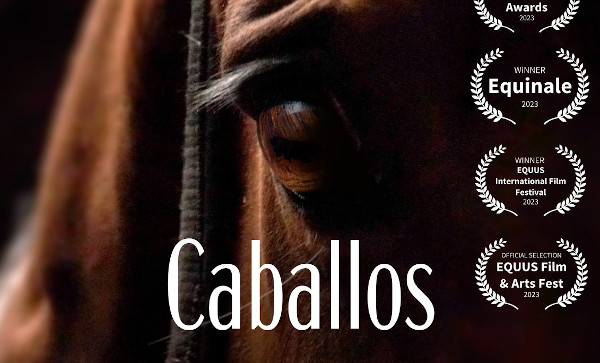
 A stable should be a pleasant workplace, functionally designed to facilitate movement, distribution and cleaning. Fundamental aspects when designing them are aesthetics, ventilation, security, consistency and flexibility. The aesthetics of a stable block say a lot about its owners; proper ventilation is essential for horses. Inadequate ventilation, excessive heat or humidity causes condensation and smells. By ‘security’ we mean for both the animals and their carers; ‘consistency’ because horses pass long boring hours by a stable wall, and could abuse it by kicking, biting and scratching. By ‘flexibility’ we mean mounting a design that easily allows for successive enlargement.
A stable should be a pleasant workplace, functionally designed to facilitate movement, distribution and cleaning. Fundamental aspects when designing them are aesthetics, ventilation, security, consistency and flexibility. The aesthetics of a stable block say a lot about its owners; proper ventilation is essential for horses. Inadequate ventilation, excessive heat or humidity causes condensation and smells. By ‘security’ we mean for both the animals and their carers; ‘consistency’ because horses pass long boring hours by a stable wall, and could abuse it by kicking, biting and scratching. By ‘flexibility’ we mean mounting a design that easily allows for successive enlargement.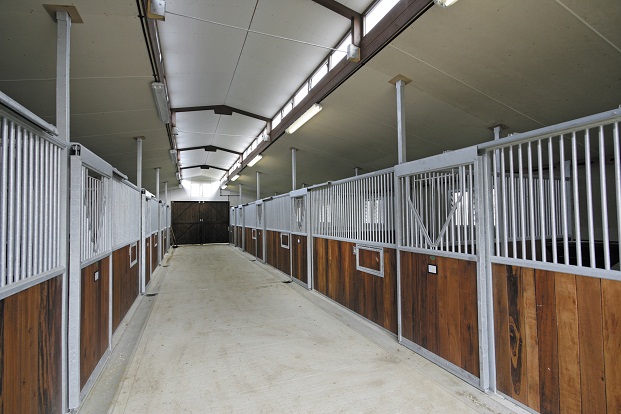 Sometimes flocks of mares are kept together with their foals in draughty warehouses. Occasionally blocks are managed without proper separation or fences. Typically, stables are built in one of two ways: as an individual stable or an ‘American barn’. Individual stables are of the traditional type – in the form of an L or U, or as a patio. This is also the preferred construction at racecourses, for reasons of privacy, security or independence. American barns are usually found at studs, clubs, establishments with large numbers of animals, where daily work under cover can be achieved.
Sometimes flocks of mares are kept together with their foals in draughty warehouses. Occasionally blocks are managed without proper separation or fences. Typically, stables are built in one of two ways: as an individual stable or an ‘American barn’. Individual stables are of the traditional type – in the form of an L or U, or as a patio. This is also the preferred construction at racecourses, for reasons of privacy, security or independence. American barns are usually found at studs, clubs, establishments with large numbers of animals, where daily work under cover can be achieved.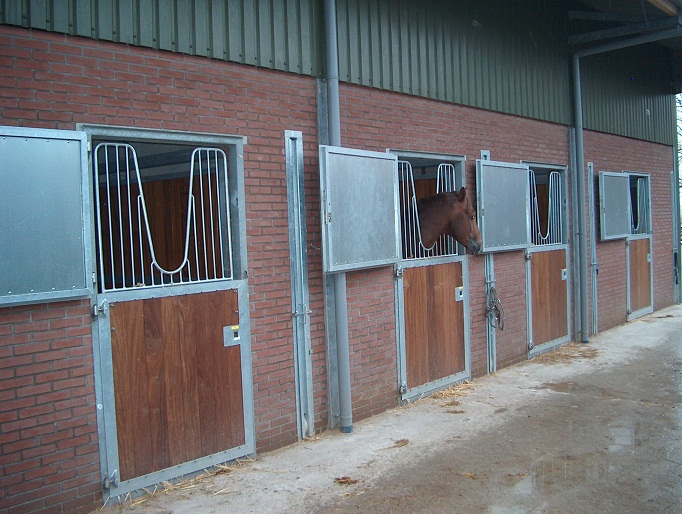 Stable block walls should be smooth, without projections or sharp edges damaging to animals, though horizontal slits at a certain height can ensure that an animal which has lain close to a wall may change position or get up without panic or injury. As far as the separations or ‘party walls’ between the horses, every professional has an unbeatable theory. Our experience makes us install a solid barrier with a height of between 1.25 to 1.50 m., or a lighter one of the barred type at 2.20 to 2.30 m. These allow for good air circulation and allow the horses to socialise, for we must not forget that the horse is gregarious. Barriers with a blind spot at the top, or barred walls or a grate offer optimum results. The space between bars should never measure more than 60 mm. to avoid accidents.
Stable block walls should be smooth, without projections or sharp edges damaging to animals, though horizontal slits at a certain height can ensure that an animal which has lain close to a wall may change position or get up without panic or injury. As far as the separations or ‘party walls’ between the horses, every professional has an unbeatable theory. Our experience makes us install a solid barrier with a height of between 1.25 to 1.50 m., or a lighter one of the barred type at 2.20 to 2.30 m. These allow for good air circulation and allow the horses to socialise, for we must not forget that the horse is gregarious. Barriers with a blind spot at the top, or barred walls or a grate offer optimum results. The space between bars should never measure more than 60 mm. to avoid accidents.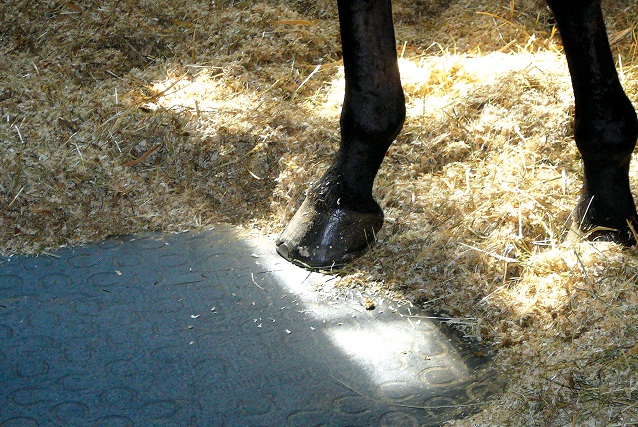 More recently concrete has been used, much easier to clean. But, concrete is cold and hard and potentially damp material. Rubber floors and modern BELMOND plates are waterproof, easy to install and safe because they do not slip, or allow moisture to gather by capillary rising. They are warm and provide a flexible surface. Rubber soil represents an added cost, but this must be balanced against longer daily use.
More recently concrete has been used, much easier to clean. But, concrete is cold and hard and potentially damp material. Rubber floors and modern BELMOND plates are waterproof, easy to install and safe because they do not slip, or allow moisture to gather by capillary rising. They are warm and provide a flexible surface. Rubber soil represents an added cost, but this must be balanced against longer daily use. The use, placement and type of feeding, drinking and forage containers within the box is always controversial between professionals. Some prefer hay on the floor, getting the horse to drink at the trough. Based on our experience we think the best thing to do is to examine the multiple models and materials found in the market. Our advice is: buy feeders and automatic waterers specifically designed for horses. Place them at diagonal opposites, so that the animal after feeding needs as long as possible to reach the water container, leaving the smallest amount of grain possible in the mouth, because it will rot in the water, and the animal will not wish to drink it at either corner. If alfalfa is being used, give it a special place above the feeding trough, as the animal will pull at it, causing leaves to fall into other foods, all of which can be eaten later. The alfalfa feeder should have side rails to prevent leaves falling anywhere else but the food container. In all cases however, feeders and water trough should be inspected daily.
The use, placement and type of feeding, drinking and forage containers within the box is always controversial between professionals. Some prefer hay on the floor, getting the horse to drink at the trough. Based on our experience we think the best thing to do is to examine the multiple models and materials found in the market. Our advice is: buy feeders and automatic waterers specifically designed for horses. Place them at diagonal opposites, so that the animal after feeding needs as long as possible to reach the water container, leaving the smallest amount of grain possible in the mouth, because it will rot in the water, and the animal will not wish to drink it at either corner. If alfalfa is being used, give it a special place above the feeding trough, as the animal will pull at it, causing leaves to fall into other foods, all of which can be eaten later. The alfalfa feeder should have side rails to prevent leaves falling anywhere else but the food container. In all cases however, feeders and water trough should be inspected daily.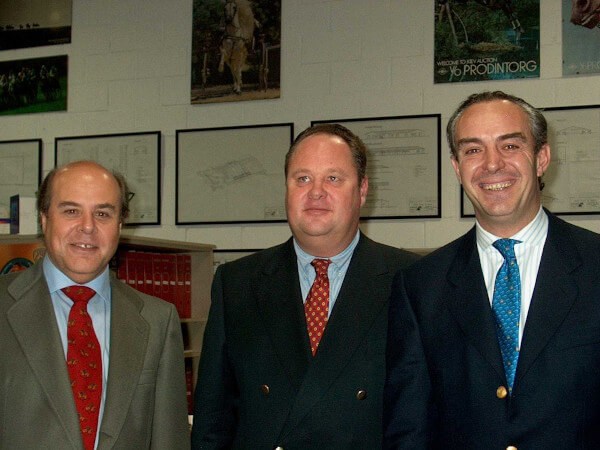 Los socios fundadores de LUPA en la inauguración de la actual sede
Los socios fundadores de LUPA en la inauguración de la actual sede